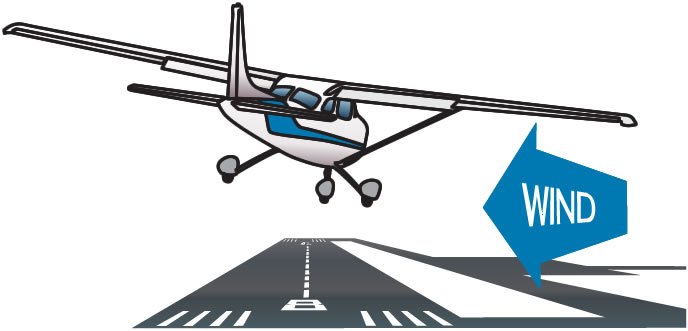I enjoyed Jeb Burnside’s article, “Crosswinds On Rails,” in the July issue and some further suggestions about crosswind landings, plus a correction:
If you use the slipping technique landing upwind wheel first, I suggest that you don’t set up too early with your slip on final. The winds even at 200 feet agl usually are much stronger than at the surface, so you may have lots of cross-control input and the added power all that drag requires. Just crab it down to 100 feet or even 30 feet, then slowly put the wing down while swinging the nose straight. This works well whether I’m flying an MD-88 or my J-3.

No matter what technique you use, swing the nose slowly. If you swing it quickly to align with the runway, the upwind wing will rudder-roll up—the exact opposite of what you want.
Understand that at the high angles of attack typically experienced in the flare, the ailerons go to sleep much faster than the rudder. So when you rudder the nose straight, you may have trouble keeping that upwind wing from rising slightly in a rudder-induced roll. You can see this vividly in online videos of airliners attempting to land in crosswinds and going around. In one, the crew quickly squirted the nose straight and the upwind wing clearly flew up against full aileron.
To prevent the higher alpha in the flare, add 10 knots to your landing speed. You’ll have crisper ailerons through the landing.
And if you’re lucky enough to have access to a taildragger and a grass field during a crosswind, practice long slow landing and takeoff rolls on one wheel.
Finally, the correction: The straightening or aligning maneuver should not be coordinated. If it’s coordinated, you defeat the slip, which is an uncoordinated maneuver, ball out of center when the upwind wheel touches. Perhaps you meant “smooth?”
Martin Giesbrecht Via email
Thanks for the additional tips! And good catch on aligning the airplane with the runway. Yes, we meant to say the transition should be “smooth,” not “coordinated.”
Lightning
Mike Hart’s July 2015 article on lightning was quite “enlightening.” One thing that caught my attention in a sidebar was the reference to the Apollo 15 lightning strike. Apollo 15 sustained a strike near the launch pad that shorted out some ground equipment prior to launch. But it was the Apollo 12 vehicle that was struck several times while in ascent.
Howard Drabek Via email
You’re right about Apollo 12, which is the launch we meant to reference but somehow didn’t.
Buddy Holly
Bob Wright’s article about the Buddy Holly crash (“The Day The Music Died,” July 2015) states the accident airplane was equipped with a Sperry F3 attitude gyro. This attitude gyro displays information exactly opposite from a conventional attitude indicator.
For example, the hemisphere above the horizon line is black and represents the sky, while the hemisphere below the horizon line is white and represents the ground. A vertical line in the center, referred to as the “meridian line,” bisects the sphere. For a pilot not proficient with the Sperry F3, it is easy to understand how pitch and bank information may be misinterpreted predisposing to an unusual attitude, and possibly to loss of control.
The accident report alluded that the pilot may have read the Sperry F3 as though it was a conventional attitude indicator and perceived the airplane was pitched up and gaining altitude, when it was actually pitched down and descending.
Mr. Wright advocates applying the PAVE method of risk management as a means of preventing LOC accidents, and he is correct. The pilot needs to have a thorough understanding of an aircraft’s equipment and achieve proficiency using the equipment and requisite skills needed to fly safely in IMC. Unfortunately, this may not have been the case in this fatal accident.
Michael Banner, PhD, CFII, MEI Via email




